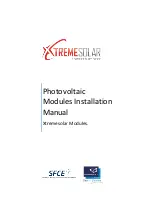
Chapter 2 Touch Screen Design Considerations
15
Mechanical Considerations
Tail Routing
To minimize the risk of electromagnetic interference, never run the touch screen tail near
or over the LCD backlight inverter. Although the tail is shielded, the noise generated by
an inverter is broadband and can contain frequencies close to the signal frequency.
The touch screen tail is not a handle. Never pick your touch screen up by the tail. It is an
electrical connection and is not designed for high stress.
Do not place constant stress on the tail during handling or integration. Do not expose the
tail to mechanical stresses as a result of the integration design. Provide adequate slack to
ensure there is no straining on the tail. Avoid lateral pulls that may overstress the
outermost electrical contacts on the glass.
Tail bond and strain
relief area
Always design your touch screen integration with the flex tail exiting from the top or
sides of the display. Never design tail exits from the bottom as spills could accumulate in
the tail attachment area and cause electrical shorting.
Avoid creasing the
tail within 0.5 inch
(1.27 cm) of the
strain relief. A soft
bend is acceptable.
The touch screen tail is designed to be flexible, and it may be creased
once in a single
direction,
in multiple locations along the tail and then secured in position with a light
adhesive tape. Avoid angular creases (45°) to the tail directly in the area of the bond and
tape strain relief.
The touch screen tail should not move freely after assembly. Apply tape or another light
adhesive to secure the tail in a manner that does not apply stress to the tail.
Apply tape or other insulating material to sharp edges to protect the tail. Route the cable
away from sharp edges whenever possible.
3M Touch Systems Proprietary Information
Summary of Contents for MicroTouch ClearTek II
Page 20: ......
















































